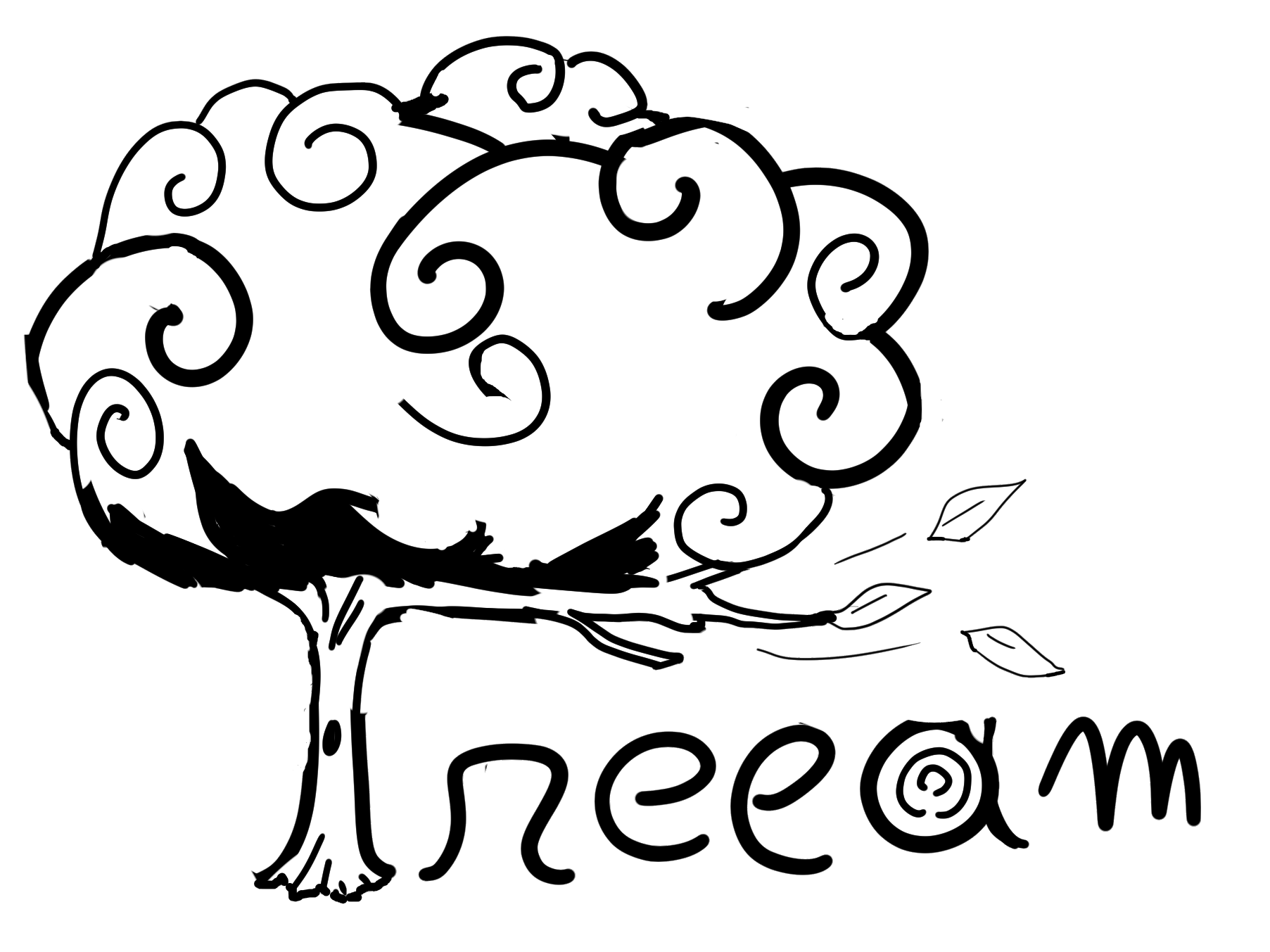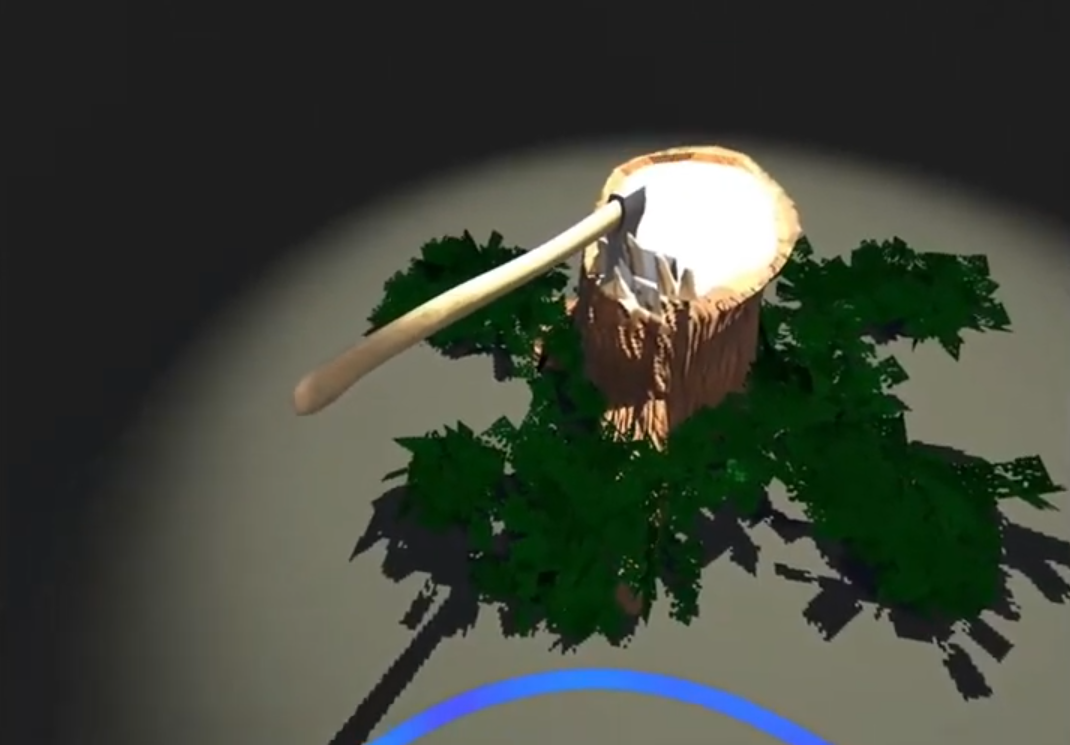
An Immersive and Collaborative Serious Game About Trees and Forest
Authors : Juliette Le Meudec, Vincent Casamayou, Adrien Corn, Justin Dillmann, Aymeric Ferron
Abstract :
This project was presented at the 3DUI Contest of IEEE VR'25 conference.
Treeam is a VR collaborative serious game conveying information about biophysical processes of trees reacting to dangers.
By having players embodying the internal functioning of trees, we want to make people more aware about the way trees live, while playing an enjoyable game. Through what we call indirect-collaboration, we allow players to communicate and help each other in order for the forest to stay alive, while completing individual mini-games.
This project questions the tendency of humans to project their own behaviours on other entities. In Treeam, we challenge the concept of collaboration between trees. Indeed, for some experts, trees do not collaborate with each other. Instead, they are in competition for resources. Thus, applying anthropomorphism to these biophysical process can show limits. In the other hand, anthropomorphism may increase the empathy of humans toward trees, raising awareness and trigger the will to protect nature. This questioning leads us to a trade-off: is it better to have a scientific and precise explanation about trees or to include some anthropomorphism to nudge people toward more sustainable behaviours? Further research must be conducted to answer this question.
DOI Paper link : 10.1109/VRW66409.2025.00413
Keywords : Virtual Reality (VR), Collaboration, Environmental Awareness, Gamification, Learning, Sustainable HCI
Video trailer :
Gameplay :
In this game, three players each have the role of a different tree in the forest. These three roles offer unique perspectives: one from high above, one at mid-height, and one at ground level. The players must face various threats and respond in order to help the forest survive. Immersed in the role of a tree, they must observe and understand how to respond to these dangers. Intentionally, few information are given about how the game works. The goal is to immerse them in the experience of being a tree and part of a forest, especially when confronted with the different threats it may face.
Their objective is to protect the forest, represented by a green health bar attached to each player’s hand. The trees will regularly face different types of natural attacks (diseases, animals, etc.), which will reduce the forest’s shared health bar. To counter an attack, the player associated with the targeted tree must successfully complete a mini-game that illustrates one of the tree’s mechanisms. Each attack is represented by a red icon visible on the players’ hands. Each mini-game is represented by an object floating on a wooden pedestal. The player can then choose the correct object to respond to the current attack and launch the mini-game. If not, the attack will continue and the forest’s health will keep decreasing until the appropriate mini-game is successfully completed.
The different types of attacks and their corresponding mini-games are the following :
Prevent tree sickness thanks to thyllosis
Thylles are cellular outgrowths in the conductive tissue of the wood preventing the spread of certain diseases. Thus, the player must examine the roots and branches of their tree to identify the contaminated parts and prevent the disease from spreading.
To do this, the player can use a scanner that allows them to see through the tree and observe the vessels. Those already infected appear in red. By targeting them with the controller, the player blocks the spread of the disease to that section. They must then find all the contaminated parts to cure the tree entirely.
Compose the correct BVOCS
In case of animal attacks, like a doe coming to eat the leaves, the player must create BVOCS (biogenic volatile organic compounds). These are volatile compounds emitted by the tree allowing it to communicate with other surrounding trees.
To do this, the player will create the requested BVOC by selecting the atoms needed to create their BVOC molecule. Atoms appear in front of them and they must hit with a stick the correct ones in an order defined by the sign in front of them. The minigame ends once the BVOC is fully created.
Reconnect the mycorhizal network
Another method of communication between trees is the transmission of information through the roots. Thus, in our case, during an ant attack, the player must reestablish micellar connections between the roots and the mycorrhizal network.
To do this, the player has access to a wheel connected to the network at the foot of the tree. Which is represented by tubes arranged around a circle. By turning the wheel, the player controls the rotation of the circle. They must then find the right angle to connect all the tubes and validate the mini-game.
Heal the tree with photosynthesis
Unlike the previous mini-games, this one doesn't involve an attack and can be started at any time. It refers to the tree's photosynthesis process. Playing this mini-game allows players to revitalize the forest.
To do this, players must place both hands in spheres that appear randomly in front of them. They must hold the position long enough to complete the mini-game and heal the forest.
Game Over
Game over occurs for all players if the forest's life reaches zero. This scenario illustrates the consequences of human activity on trees, showing different scenes and tools used to cut trees followed by numerical data about their exploitations . Trees can survive diseases, insects, and herbivores, but they can do nothing against human activity.

06/05/2025
